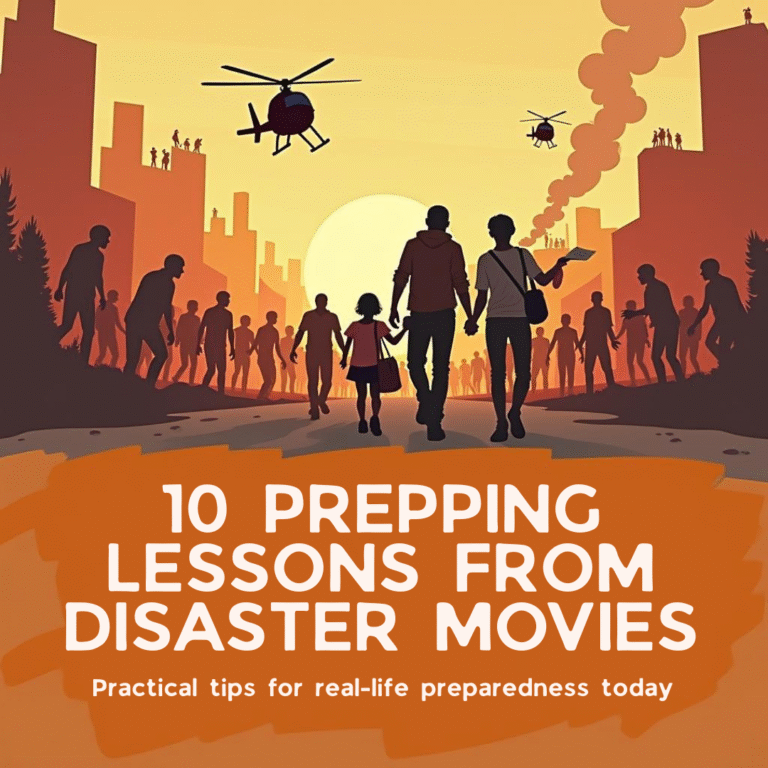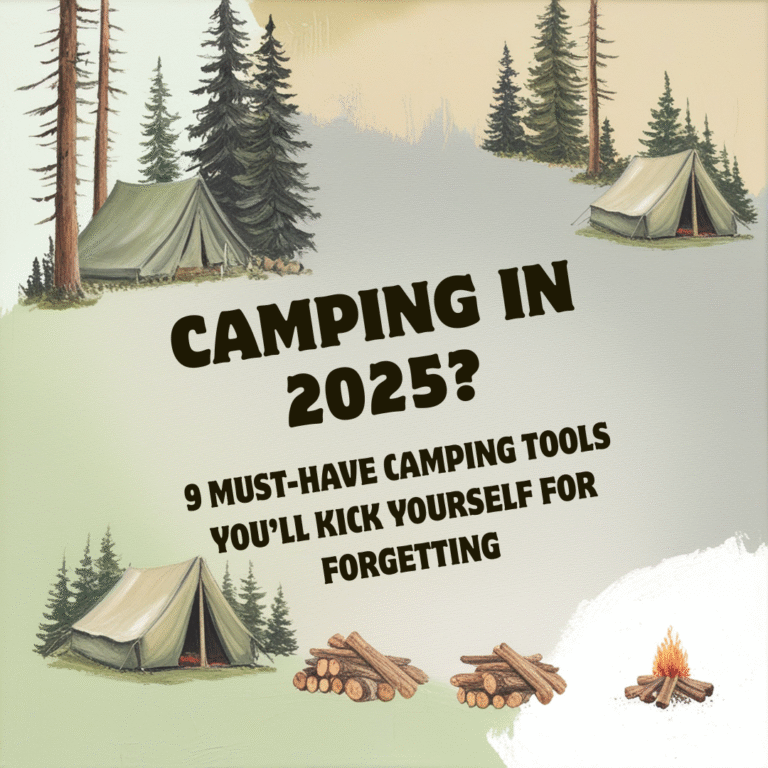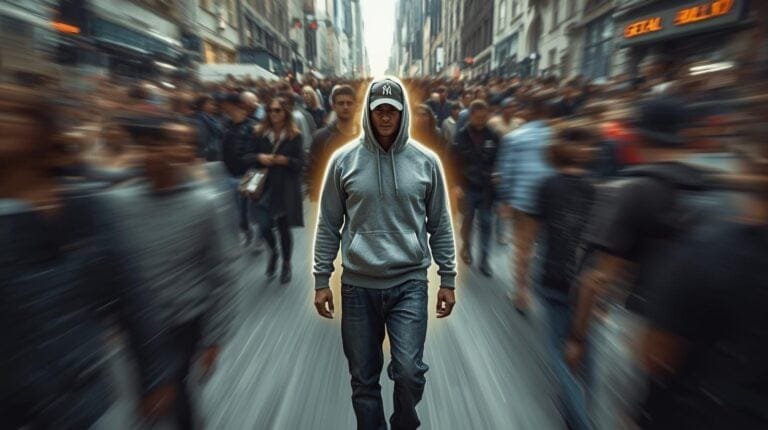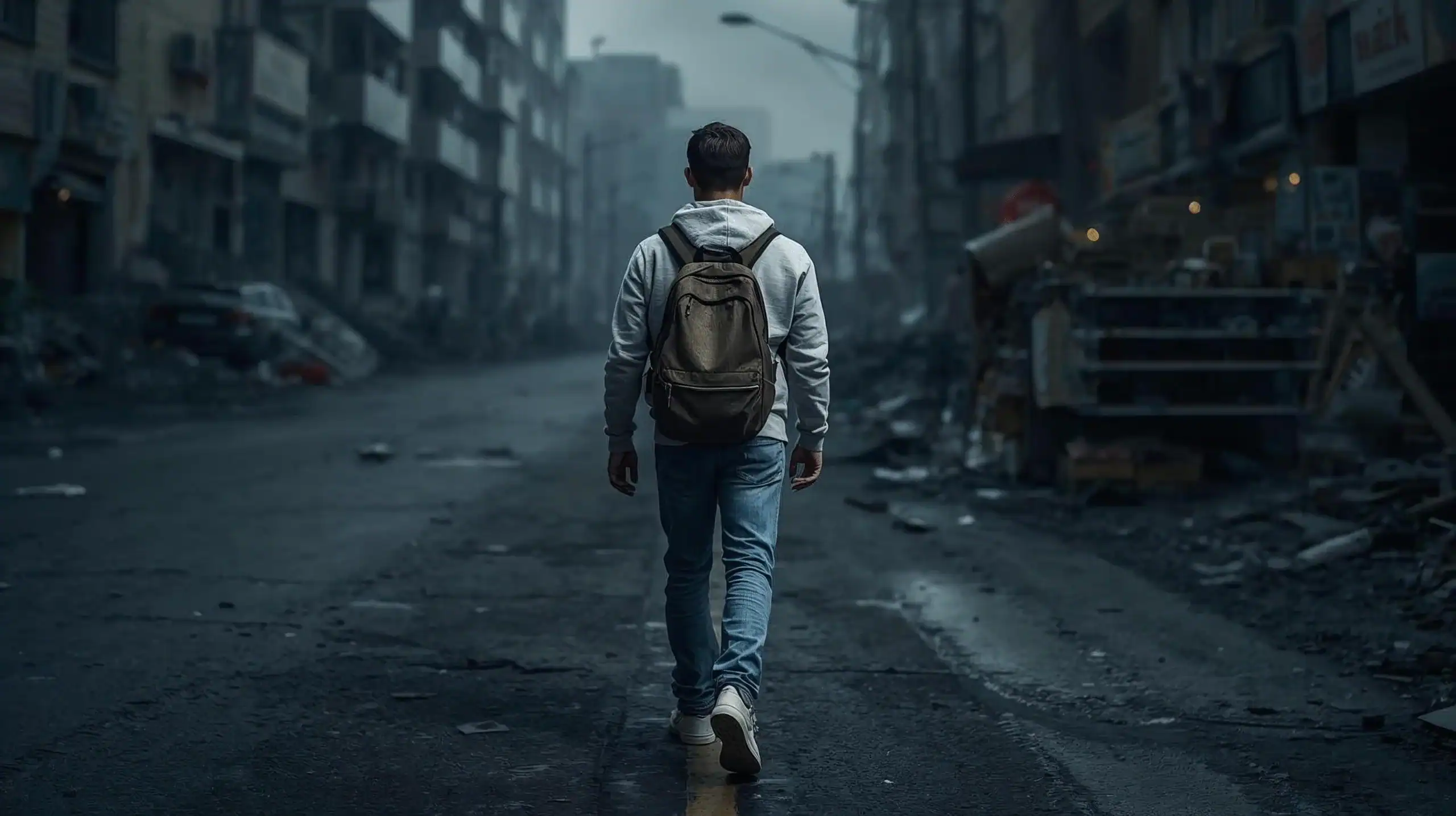
The Gray Man Theory: Be Forgettable, Not a Target
Master Class in Invisible Living (Part 1 of 2)
A confession: I once walked into a Home Depot wearing head-to-toe tactical gear because I thought it made me look “prepared.” Three employees asked if I needed help finding the paintball section, and a Karen asked me if I was “one of those militia types.” That was my wake-up call. These days, I can slip through a crowd like a suburban dad looking for the bathroom at his kid’s soccer tournament—completely unremarkable, utterly forgettable, and surprisingly effective.
In a world that’s seemingly held together by duct tape and crossed fingers, the loudest person in the room usually gets to be the first victim. Whether it’s a hurricane that turns your neighborhood into Waterworld, downtown riots that make Black Friday stampedes look civilized, or an economic meltdown that transforms Walmart into Thunderdome, standing out is like painting a bullseye on your forehead with glow-in-the-dark paint.
Enter the Gray Man Theory—a prepper’s masterpiece in the art of strategic invisibility. No dramatic capes, no Harry Potter cloaks, no tactical fashion shows that scream “I have expensive stuff, please rob me.” Just the fine art of being so magnificently ordinary that people’s eyes slide right past you like you’re elevator music in human form.
What Exactly Is the Gray Man Theory? (Spoiler: It’s Not About Being Gray)
At its beating heart, the Gray Man Theory is about becoming the human equivalent of beige paint—present, functional, but forgettable. Think less Jason Bourne, more Jim from accounting. You want to be the guy people swear they’ve seen before but couldn’t describe to a sketch artist if their WiFi password depended on it.
The Gray Man doesn’t just blend into crowds—he becomes the crowd. He’s the living embodiment of “oh, that guy? Yeah, I think he was there.” For preppers, this is more valuable than a lifetime supply of freeze-dried ice cream. Why? Because in crisis situations, flashy gear and overconfident swagger don’t make you look prepared—they make you look like a walking loot piñata.
Your mission, should you choose to accept it: become so unremarkable that you could commit the perfect crime just by being boring. (Please don’t actually commit crimes. We’re talking survival, not felonies.)
Why this matters more than your tactical pen collection: During a crisis, people aren’t forming neighborhood watch groups and baking casseroles. They’re scanning for resources like human metal detectors. If you look like you’ve got food, water, gear, or even just a decent pair of boots, congratulations—you just made someone’s shopping list, and they’re not paying with credit cards.
The Uncomfortable Truth About Standing Out the Gray Man Theory
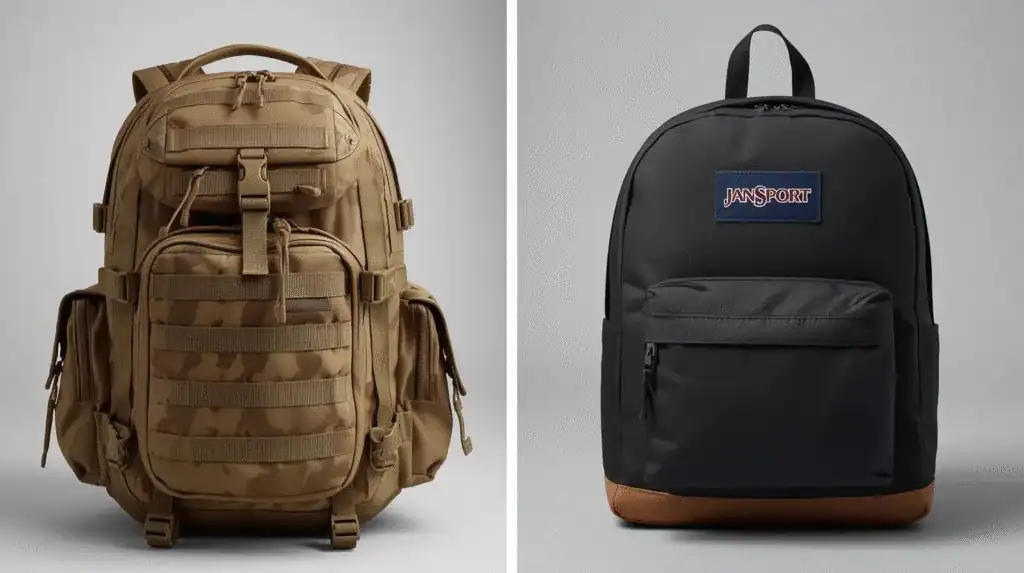
Here’s something most prepper blogs won’t tell you: that $300 tactical backpack with seventeen different attachment points? It might as well have “ROB ME” embroidered in reflective thread. Your multicam pants, operator watch, and paracord bracelet aren’t advertising your preparedness—they’re advertising your wealth and vulnerability.
I learned this the hard way during a regional blackout a few years back. While walking to check on elderly neighbors (because that’s what decent humans do), I wore my “subtle” prepper outfit: khaki tactical pants, hiking boots, and a discreet tactical shirt. Three different people asked me if I was military, two asked if I was law enforcement, and one guy straight-up asked if I had any “extra supplies” because I “looked like the type who’d be prepared.”
Meanwhile, my neighbor Dave—wearing paint-stained jeans, a faded baseball cap, and a grocery store hoodie—walked the same route and might as well have been invisible. He carried twice as much emergency gear as me (in a beat-up JanSport from 1997), helped more people, and nobody questioned him once. Dave looked like he belonged in the chaos. I looked like a tourist in Preparedness Land.
That’s when it clicked: the Gray Man isn’t about what you carry—it’s about how you carry it.
Why Preppers Can’t Afford to Skip This (Economics of Invisibility)
Picture this real scenario from my own neighborhood: The power’s been out for three days, the grocery stores are cleaned out, and tensions are rising like the temperature in everyone’s rapidly defrosting freezers. You’ve got two choices for how to venture out:
Option A: Rock your full prepper regalia—plate carrier, dangling survival knife, cargo pants with more pockets than a pool table, boots that cost more than most people’s rent. You look prepared, capable, and ready for anything. You also look like a walking military surplus store that’s open for business.
Option B: Throw on some faded jeans, a plain hoodie, beat-up sneakers, and carry your gear in something that looks like you borrowed it from your college-aged nephew. You look like just another person dealing with a shitty situation.
Guess which one gets stopped, questioned, and potentially targeted?
The Gray Man Theory flips this script in four crucial ways:
Protection Through Misdirection: If nobody notices you have supplies, nobody demands them. Your gray man appearance suggests you’re just another person struggling with the same problems as everyone else.
Drama Avoidance: No spotlight means fewer confrontations, fewer questions, and fewer people who remember seeing you with that suspicious bulky backpack.
Mobility Multiplication: Blend in seamlessly and reach your destination without unwanted detours through other people’s drama.
Universal Compatibility: This approach works whether you’re navigating urban unrest, rural checkpoints, natural disaster zones, or just trying to avoid awkward conversations at the grocery store.
Real-world proof: During regional unrest, a prepper in a plain hoodie and jeans with a nondescript backpack breezed through multiple checkpoints. The guy in tactical gear? Pulled aside, questioned, and stripped of half his kit.
The Core Principles of Going Gray (Basic Training for Invisibility) in Gray Man Theory
1. Dress Like You Shop at Target or Walmart (Because Most People Do)
The magic formula: muted colors, common brands, zero logos that scream “I spent $80 on this t-shirt because it’s tactical.”
Your new uniform is beautifully boring: jeans (not the $200 “tactical” ones), hoodies (without Velcro patches), and sneakers that could belong to literally anyone. Think of it as cosplaying a background character in the movie of life.
The Real Talk: I once spent $400 on a “gray man” wardrobe from a tactical company. Know what I ended up with? Overpriced clothes that still screamed “prepper” to anyone paying attention. Now my go-to outfit costs about $60 total from Walmart, and I’ve never blended in better. The sweet irony? Looking expensive makes you a target. Looking cheap makes you invisible.
2. Master the Art of Social Camouflage (Method Acting for Survivalists)
Mirror the crowd like you’re playing the world’s most important game of Simon Says. Walk like they walk, talk like they talk, worry about what they’re worrying about. If everyone’s checking their phones anxiously, you check yours too (even if you’re actually scanning for exits).
The goal: Become a social chameleon. In a crowd of worried suburbanites, be a worried suburbanite. Among college kids, channel your inner broke student energy. With blue-collar workers, let your “just here to do a job” attitude shine through.
Pro tip from experience: Don’t be the guy nervously scanning rooftops like you’re expecting sniper fire, and definitely don’t stride through chaos like you’re auditioning for an action movie. Both make you memorable for all the wrong reasons.
3. Hide Your Toys in Plain Sight (Tactical Gear for Normal Humans)
Your gear should whisper “laptop and leftovers,” not scream “tactical arsenal ready for societal collapse.” That means swapping your military-surplus backpack for something you’d see on a college campus or in an office break room.
Real-world examples that actually work:
- The Laptop Bag Loadout: A professional messenger bag can hold surprising gear while looking like office equipment
- The Student Special: A worn JanSport with strategic scuffs looks like it belongs on campus, not in a tactical catalog
- The Dad Pack: A slightly outdated hiking daypack suggests weekend warrior, not actual warrior
The art of concealment: Multi-tools disguised as keychains, water purification tablets in an Advil bottle, emergency cash in a beat-up wallet that looks like it’s seen better decades. Your gear shouldn’t look like gear—it should look like the random stuff everyone carries.
4. Develop Stealth-Mode Situational Awareness

Being aware of your surroundings is crucial, but looking like a paranoid security guard is counterproductive. Learn to scan, assess, and plan while looking like you’re just another person going about their day.
The techniques that work:
- The Phone Check: Use your phone’s camera or black screen as a mirror to see behind you
- The Window Shopping Method: Reflective surfaces are everywhere—storefront windows, car windows, even puddles
- The Casual Conversation: A quick chat with a local gives you intel while making you look social and harmless
What NOT to do: Don’t be the guy obviously counting exits, studying every face, or walking with the hypervigilant posture of someone expecting trouble. Save the tactical observation for when you’re actually in danger.
5. Flow Like Water (Bruce Lee Meets Crowd Psychology)
In a crowd, resistance creates attention. Go with the flow like you’re riding the world’s most boring river. Move at the crowd’s pace, follow their unspoken rules, be part of their collective rhythm.
The psychology: Humans are pattern-recognition machines. We notice what doesn’t fit. Walk too fast in a slow crowd, and you’re “the guy in a hurry.” Walk too slow, and you’re “the obstacle.” Match the rhythm, and you become part of the background music.
If the crowd is tense, you look concerned. If they’re relaxed, you chill out. If they’re focused on something specific, you glance that way too. You’re not mimicking—you’re harmonizing.
The Psychology of Being Unremarkable (Why Your Brain Fights This)
Here’s the thing that makes the Gray Man Theory challenging: it goes against every instinct modern society has programmed into us. We’re taught to be unique, to express ourselves, to stand out from the crowd. Social media has turned personal branding into a blood sport. Everyone wants to be memorable.
But memorable gets you killed when society’s normal operating system crashes.
The paradox of preparedness: The more prepared you are, the more you want to show it. It’s natural—you’ve invested time, money, and mental energy into being ready. You want that investment to be visible, validated. But visible preparation makes you vulnerable in exactly the situations where preparation matters most.
I struggled with this personally. After years of building preparedness skills and gear, staying low-key felt like hiding my light under a barrel. Then I realized: the goal isn’t to look prepared—it’s to BE prepared while looking like everyone else who isn’t.
The confidence trap: Prepared people tend to move with more confidence during crises. This confidence, while admirable, can make you stand out. The Gray Man masters the art of confident incompetence—moving with purpose while looking like he’s not entirely sure what that purpose is.
How to Train Your Inner Gray Man (Basic Bootcamp)
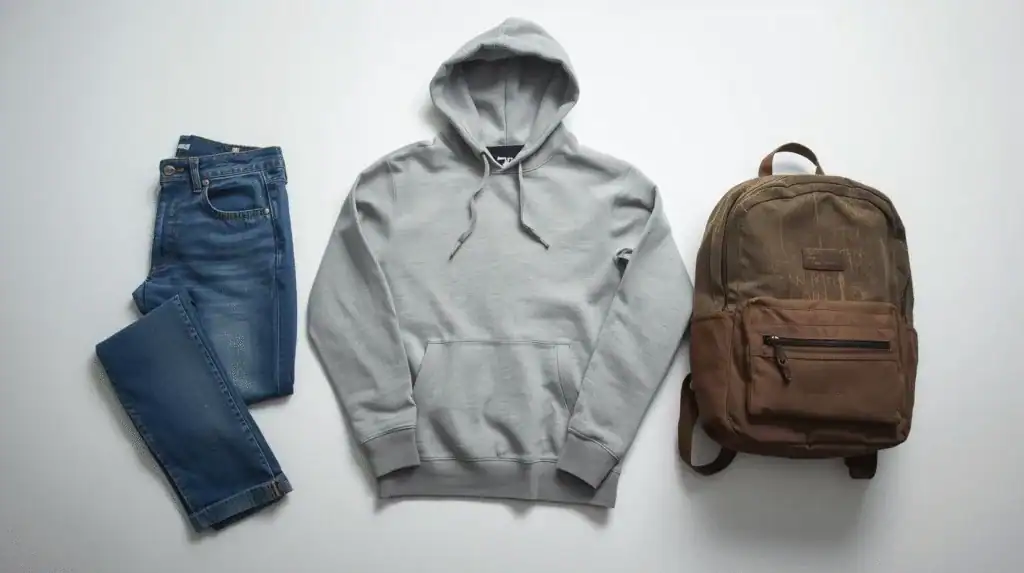
Step 1: The Brutal Wardrobe Audit
Go through your clothes with ruthless efficiency. Ask yourself: “Would this make me memorable?” If yes, it goes in the “special occasions only” pile.
The $50 Gray Man starter pack: Walmart jeans ($15), plain hoodie ($12), white t-shirts 3-pack ($8), generic sneakers ($15). You’ll blend in better than someone wearing $500 worth of “gray man” gear from tactical companies.
Step 2: Situational Awareness Bootcamp
Start in low-stakes environments like malls. Practice identifying exits and potential problems while looking like you’re checking your phone or scanning for someone you’re meeting.
Training exercise: After leaving any location, write down everything you observed. You’ll be shocked how much you can absorb while looking completely uninterested.
Step 3: Pack Like Your Life Depends on Looking Normal
Your gear needs to pass the “nosy neighbor test”—if someone saw your bag’s contents, would they think “regular person” or “survivalist”?
Disguised gear examples:
- Water purification tablets in generic pill bottles
- Emergency cash in old, worn wallets
- Multi-tools as slightly fancy keychains
- First aid supplies in makeup bags
Step 4: Master Social Blending
Practice adapting your demeanor to different environments. Suburban neighborhoods require friendly-but-busy energy. Urban areas need purposeful movement. Rural areas call for slower pace and eye contact.
Conversation skills: Learn to talk about nothing while learning everything. Master deflection: when someone asks what you do, have a boring answer ready. “Customer service” makes eyes glaze over faster than detailed job descriptions.
Step 5: Field Testing
Start small—walk through different neighborhoods and see if anyone gives you a second glance. Work up to crowded events where you practice being unremarkable.
The ultimate test: Have a friend try to spot you in a crowd after you’ve had time to blend in. If they struggle to find you, you’re getting it right.
Common Beginner Mistakes in Gray Man Theory (Learning from My Failures)
The “Expensive Poor Guy” Problem: Wearing a $20 hoodie with $200 boots. Your entire ensemble needs to be believable—consistency sells the illusion.
The “Overconfident Agent” Syndrome: Moving through chaos with too much purpose makes you stand out. Master confident incompetence—handle things okay, but not too okay.
The “Wrong Crowd” Error: Perfect gray man outfit in the wrong environment still makes you memorable. Suburban casual in a business district marks you as an outsider.
Why This Matters More Than Ever
The Gray Man Theory isn’t about living in fear or constant deception. It’s about understanding that sometimes the most powerful thing you can be is unremarkable. In a world where standing out can make you a target, the ability to blend in becomes a superpower.
You can still help neighbors, contribute to your community, and live a full life. You just do it in ways that don’t paint a target on your back when times get tough.
The key insight: Preparation without advertisement. Being ready for problems without advertising that readiness to people who might become problems themselves.
What’s Coming in Part 2
You now have the fundamentals—the core principles and basic training to start your gray man journey. But we’ve barely scratched the surface. In Part 2, we’ll dive deep into the advanced techniques that separate the amateurs from the masters:
- Advanced psychology techniques for reading rooms and matching energy
- Regional variations—how to adapt your approach for urban, suburban, and rural environments
- Technology challenges and maintaining digital invisibility in a connected world
- Real-world case studies from actual emergencies and what they teach us
- The ethics of invisibility and when to break character
- Long-term sustainability strategies for living gray without losing yourself
- Future-proofing your gray man skills for an evolving world
Your Assignment Until Part 2
Don’t just read this—start practicing. This week:
- Audit one piece of your wardrobe and replace something flashy with something boring
- Practice situational awareness in a public place while looking like you’re doing something else
- Test your social camouflage by spending time in an environment where you don’t quite belong
- Start people-watching with purpose—notice what makes people memorable and what makes them forgettable
The Gray Man Theory is a skill that develops over time. Start building that muscle memory now, because when you need these skills for real, there won’t be time for practice rounds.
Remember: in survival situations, it’s not always the strongest, smartest, or most prepared person who wins. Sometimes it’s just the one nobody noticed walking by with a full backpack and a boring story about why they’re going wherever they’re going.
The best compliment you can receive as a gray man? “You know, I swear I’ve seen you before, but I can’t remember where.”
Next week: We’ll explore the advanced techniques that turn basic invisibility into an art form. Until then, practice being forgettable. Your future self will thank you.
Part 2 drops next week with advanced techniques, real-world case studies, and the psychology of strategic invisibility. Don’t miss it.
Affiliate Note
Heads-Up, Fellow Preppers: Some links in this post are sponsored or affiliate links. If you click and buy, I may earn a small commission—enough to keep my peanut butter stash stocked and maybe sneak in an extra can of chili for the bunker.

